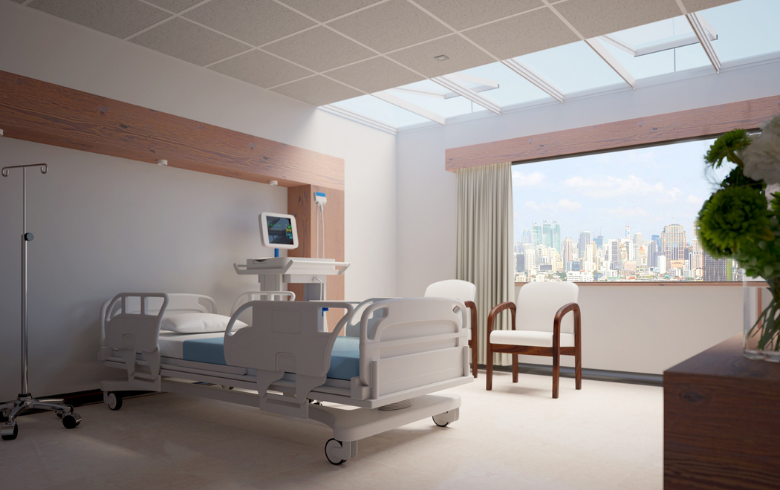Daylight is a healing force.
Natural light helps regulate our circadian rhythms and also has a role in our emotional health, heart function, body temperatures, and other necessary healing functions. And because it has such a big impact on our health, it makes sense to consider how hospitals can improve with natural lighting through skylights.
The Negative Effects of Artificial Lighting
Advances in artificial lighting have allowed architects to design larger and deeper buildings with many enclosed areas that don't rely on natural lighting at all for illumination. While these areas are habitable, they can have negative effects on general well-being and productivity and lack efficiency. Patients in windowless rooms often report feeling higher levels of stress and, in some extreme cases, may suffer from the effects of Sick Building Syndrome (SBS).
The Benefits of Natural Light in Hospitals
Natural light and the views through windows, on the other hand, can offer wellness benefits to patients and hospital staff alike:
- Reduce the length of in-patient stays. Research has shown that patients admitted to brighter rooms spend up to 41% less time in the hospital than those in dimmer or windowless rooms. Mortality rates are also higher among patients in darker rooms.
- Speed up post-operative recovery. Post-op patients in rooms with ample natural light and nice views feel less stressed and have lower blood pressure, which is vital for recovery. On the other hand, patients in windowless rooms are at a greater risk of feeling depressed and developing postoperative delirium. This can lead to increases in inflammation in the body, which increases pain and hinders healing.
- Contribute to greater pain relief. Roughly 22% of patients in bright, naturally lit rooms report needing fewer pain medications. While pain medication is a necessity for any hospital, patients who need more pain medicine must deal with any negative side effects and higher medical bills while healing.
- Improve employee morale. Natural lighting boosts employee moods and productivity. It has been shown to help employees feel more energized. And in a hospital environment, employees with access to natural light and views of nature report lower stress levels and health-related absenteeism.
Ideal Natural Lighting Levels for Hospitals
When it comes to designing hospitals and other health care spaces, the most important factors regarding window design are the amount of daylight that enters a space, the view, and patient privacy and proximity to the window. Generally, patients tend to prefer windows that occupy at least 25% of an exterior wall, with many preferring rooms with two or more windows. Additionally, numerous studies have found that exposure to bright lights (at least 2,500 lux) that contain short white or blue wavelengths is the most beneficial to patients. This is especially true for patients with Alzheimer's or dementia, who were shown to display less agitation later in the day and improved sleep-wake cycles.
With these factors in mind, skylights are a perfect solution for hospital designs. They display colorful views throughout the day while providing consistent natural light. And since they're positioned on the roof, skylights offer all the benefits of a vertical window with the added benefit of privacy.
Hospitals should be the ultimate healing environment. While bright natural light is best, it's not always possible to get optimal levels through vertical windows during certain seasons or because of building constraints. Skylights are a unique design solution for healthcare facilities, exposing patients and staff to the benefits of the sun's healthy wavelengths while helping to improve the quality of care for patients.




.png?width=805&name=get%20the%20commercial%20application%20ebooks%20(1).png)